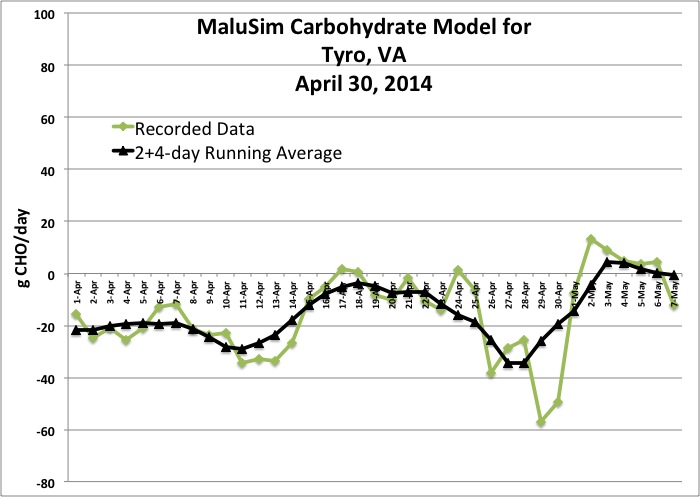Growers in the Central Virginia growing region are reporting that their bloom is stretched out quite a bit with some side bloom still in flower and some king bloom fruit approaching 5 to 6 mm in fruitlet size. In general, most chemical thinners are more active on the smaller, slower growing fruit, so this spread may prove to be advantageous.

For those Central Virginia growers who are starting to map out their thinning schedule, I’ve started running the MaluSim carbohydrate model. I will discuss the details of how the model works, as well as my research results on validating the model at the meeting on Thursday, May 1.
The MaluSim model is most effective at predicting thinning efficacy at the 10 mm timing, and has a much lower predictive value for flower, petal fall, or 20-25 mm thinning applications.
As of today, the long-term forecast shows a long string of days with mild temperatures and lots of sun. From these forecasted data, the MaluSim model <<pdf>> is showing no extremes in carbohydrate supply, meaning that chemical thinners will have a “average” response. For a detailed look at the model, as well as interpretation table, download the above linked pdf.
For the Winchester area, I will assess fruit development on Friday to decide when the first model run is warranted.
A big thank you to John Saunders for helping with the MaluSim modeling work this year. Last year, Dr. Mizuho Nita (grape plant pathologist at our AREC) installed weather stations at Silver Creek and set up a network relay system that allows me to download meteorological data from Silver Creek right to my computer. If you work with Mizuho on grape disease related issues, please thank him as well!
